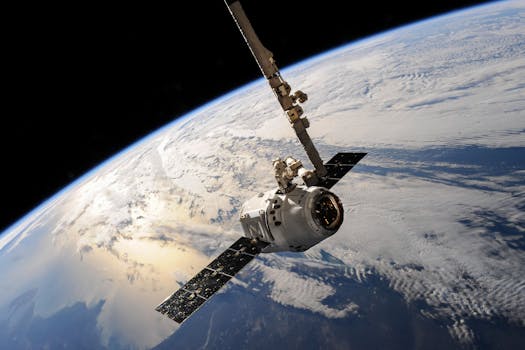
GEO Satellites: The Backbone of Global Connectivity
GEO satellites, or Geostationary Earth Orbit satellites, are a type of satellite that orbits the Earth at an altitude of approximately 36,000 kilometers, remaining stationary relative to a fixed point on the equator. This unique characteristic allows GEO satellites to provide continuous coverage of a specific region, making them ideal for various applications such as telecommunications, navigation, and remote sensing. The focus keyword GEO satellites is essential in understanding the significance of these satellites in modern technology.
The history of GEO satellites dates back to the 1960s, when the first geostationary satellite, Syncom 2, was launched. Since then, numerous GEO satellites have been launched, providing a wide range of services, including television broadcasting, telecommunications, and weather forecasting. Today, GEO satellites play a vital role in global connectivity, enabling communication, navigation, and remote sensing applications that are essential for modern society.
Applications of GEO Satellites

GEO satellites have a wide range of applications, including telecommunications, navigation, remote sensing, and weather forecasting. In the field of telecommunications, GEO satellites are used to provide internet connectivity, mobile phone services, and television broadcasting. They are also used for navigation purposes, such as GPS, which relies on a network of GEO satellites to provide location information and timing signals. Additionally, GEO satellites are used for remote sensing applications, such as monitoring climate change, tracking natural disasters, and mapping the Earth’s surface.
One of the most significant advantages of GEO satellites is their ability to provide continuous coverage of a specific region. This makes them ideal for applications that require real-time data, such as weather forecasting and navigation. Furthermore, GEO satellites can be used to provide connectivity in remote or underserved areas, where traditional communication infrastructure is lacking. This has made GEO satellites an essential tool for disaster response and recovery efforts, as they can provide critical communication services in areas affected by natural disasters.
Technological Advancements in GEO Satellites

In recent years, there have been significant technological advancements in GEO satellites, including improvements in propulsion systems, power generation, and communication equipment. These advancements have enabled the development of more efficient and cost-effective GEO satellites, which can provide higher-quality services and longer operational lifetimes. Additionally, the use of advanced materials and manufacturing techniques has enabled the production of smaller and more compact GEO satellites, which can be launched at a lower cost and with greater flexibility.
Another significant development in GEO satellites is the use of electric propulsion systems, which provide higher efficiency and longer operational lifetimes compared to traditional chemical propulsion systems. Electric propulsion systems use electrical energy to accelerate ions or neutral particles, generating a high-specific-impulse thrust. This technology has been used in several GEO satellites, including the Boeing 702SP and the Airbus Eurostar 3000.
Challenges and Future Developments

Despite the many advantages of GEO satellites, there are several challenges associated with their use, including orbital congestion, interference, and the risk of collisions. As the number of GEO satellites increases, the risk of orbital congestion and interference also increases, which can impact the performance and reliability of these satellites. Additionally, the risk of collisions between GEO satellites and other objects in orbit is a significant concern, as it can result in the loss of critical communication services and the creation of debris in orbit.
To address these challenges, several initiatives have been launched to promote the sustainable use of GEO satellites and mitigate the risks associated with their operation. These initiatives include the development of new technologies and protocols for collision avoidance, as well as international cooperation and regulatory frameworks to govern the use of GEO satellites. Furthermore, there is a growing interest in the development of new types of satellites, such as megaconstellations and small satellites, which can provide alternative solutions for global connectivity and remote sensing applications.
See more:




